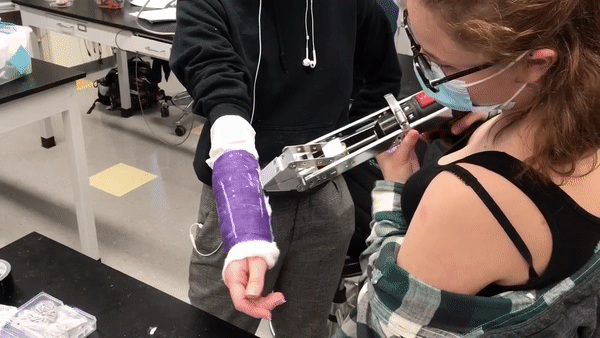Team Members
- Anna Baber
- Abbey Gilman
- Melisanda Feliz
- Thomas Dolan
- Delaney Martino
Mentor
Mark Buckley
Customer
Natasha O’Malley
Abstract
The current method of removing casts, the cast saw, is loud and scary to children. This results in traumatic experiences at the doctors and in some cases having to anesthetize children just to remove their casts. For our project, we developed a quieter and less scary method of removing casts centered around our custom cast splitting device that pries open that cast.
The Problem
The way that casts are conventionally removed is using a cast saw. The saw uses a small oscillating blade to cut through the cast with minimal risk to the patient. The issue is that cast saws are still undeniably… saws, and because of this the noise and the visual of the saw can be really scary for children and people with sensory issues. This can get so bad that kids may need to be put under anesthesia to get the casts removed. Our goal was to create a system and device that can remove casts in a way that is less intimidating than a cast saw.
The Process
We first defined the problem.
Then we brainstormed some ideas

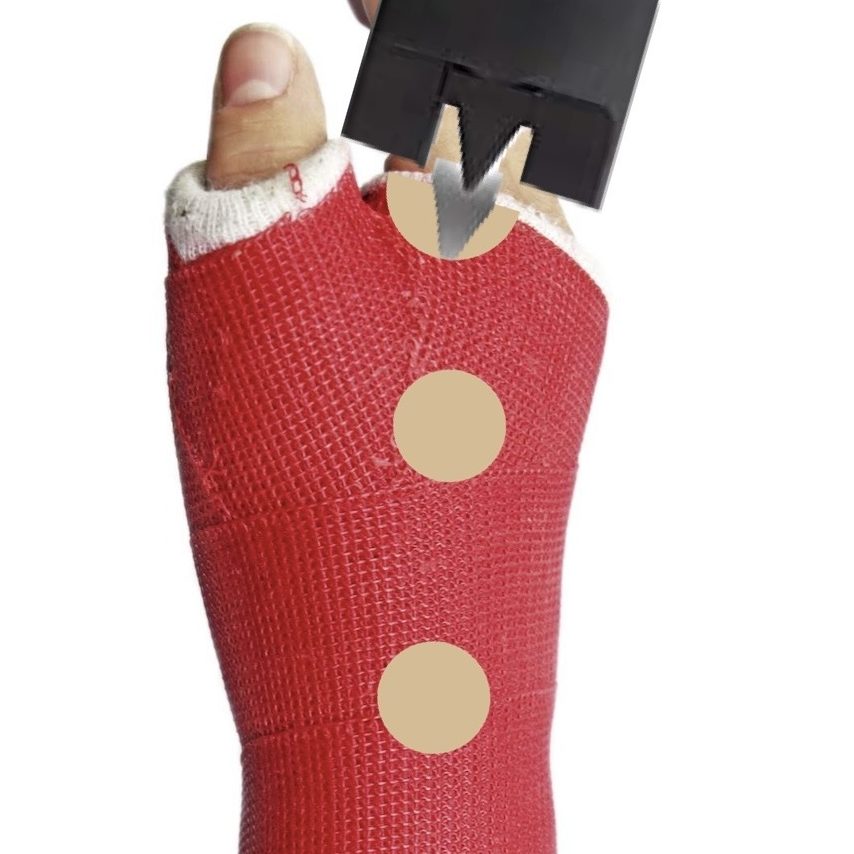
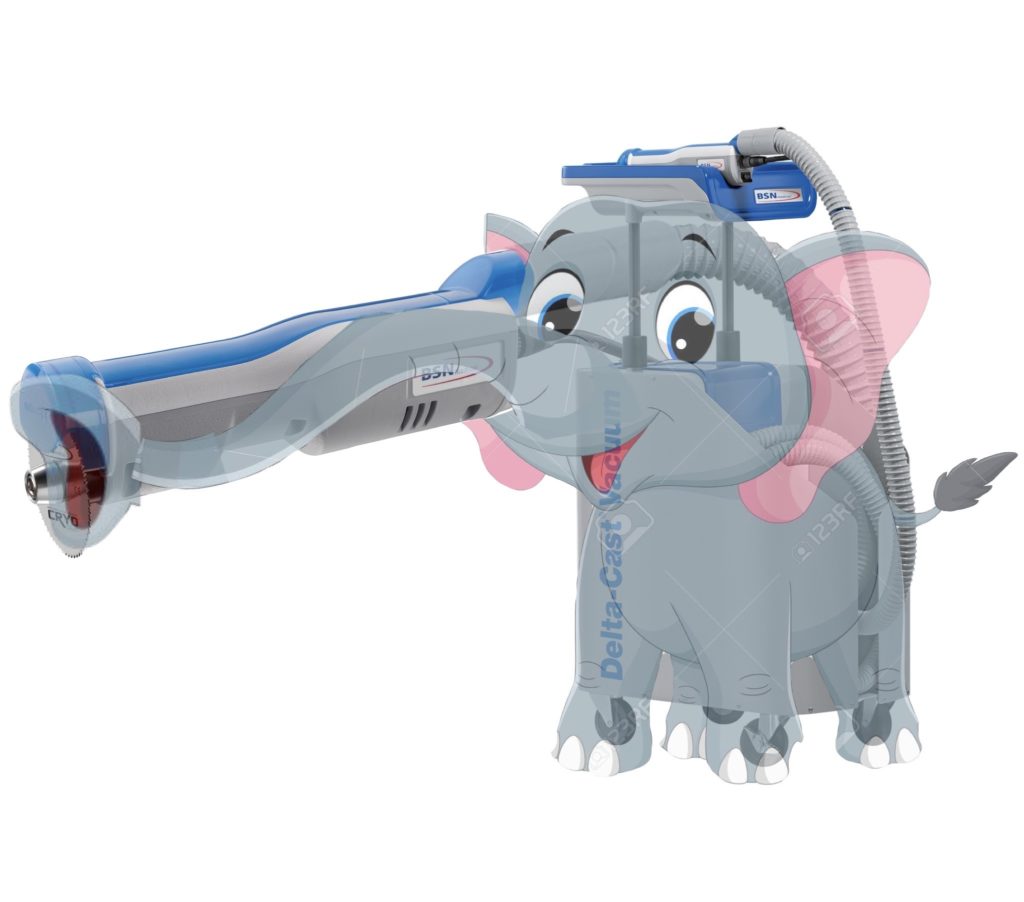
We decided to move forward with the splitter idea, collected material data and modeled how the split might happen.
Made some prototypes.
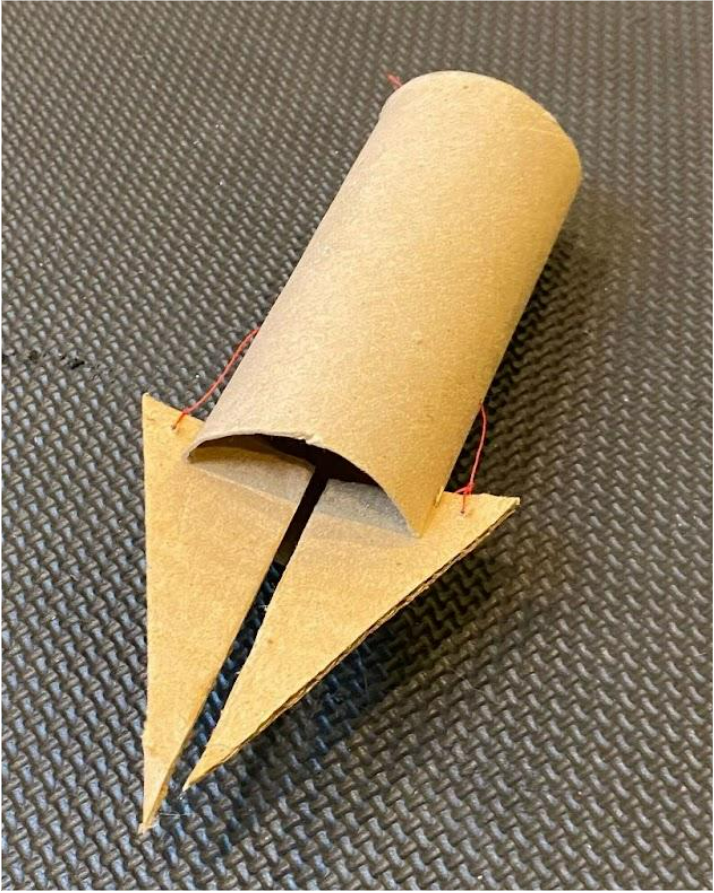
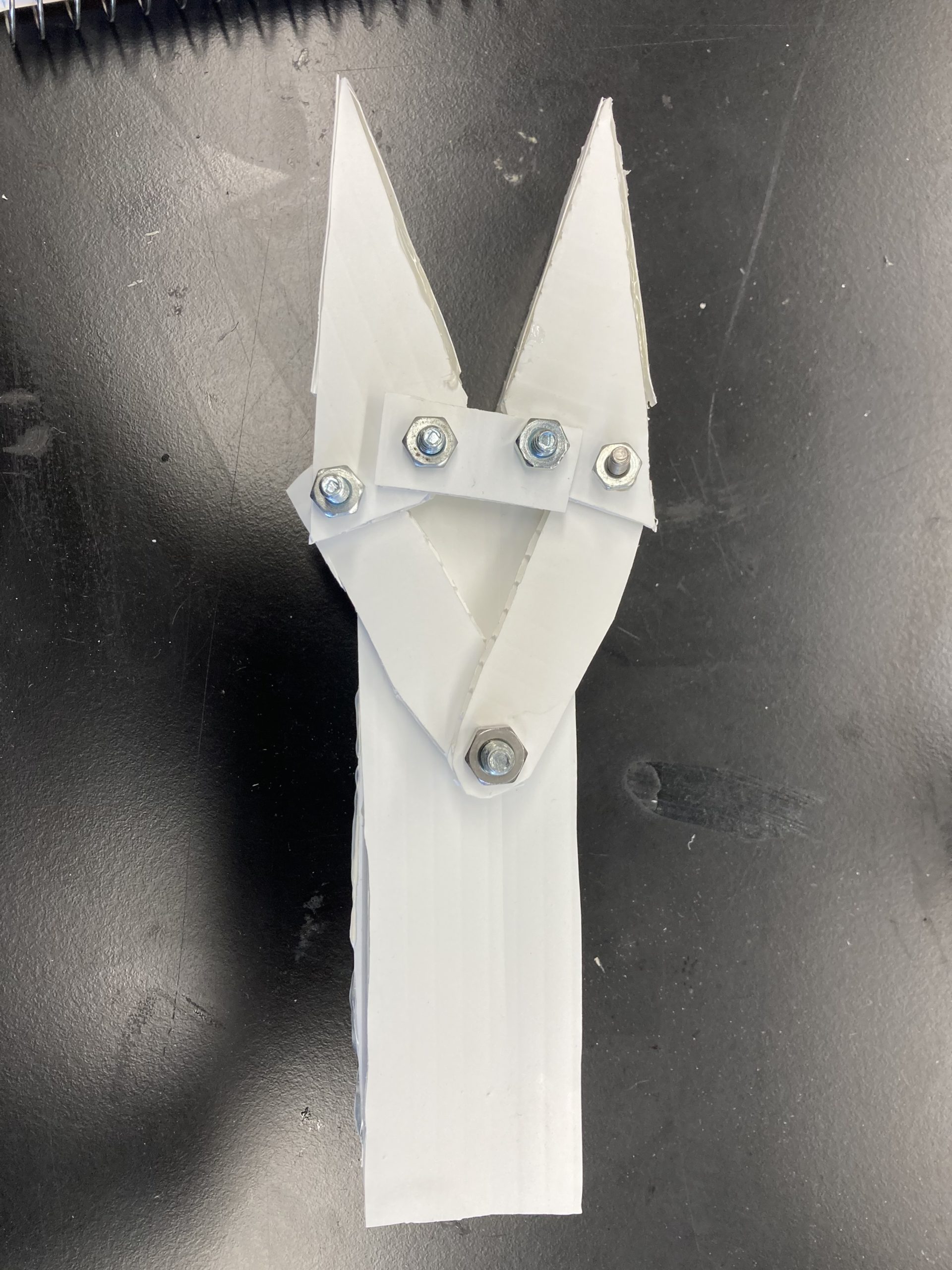
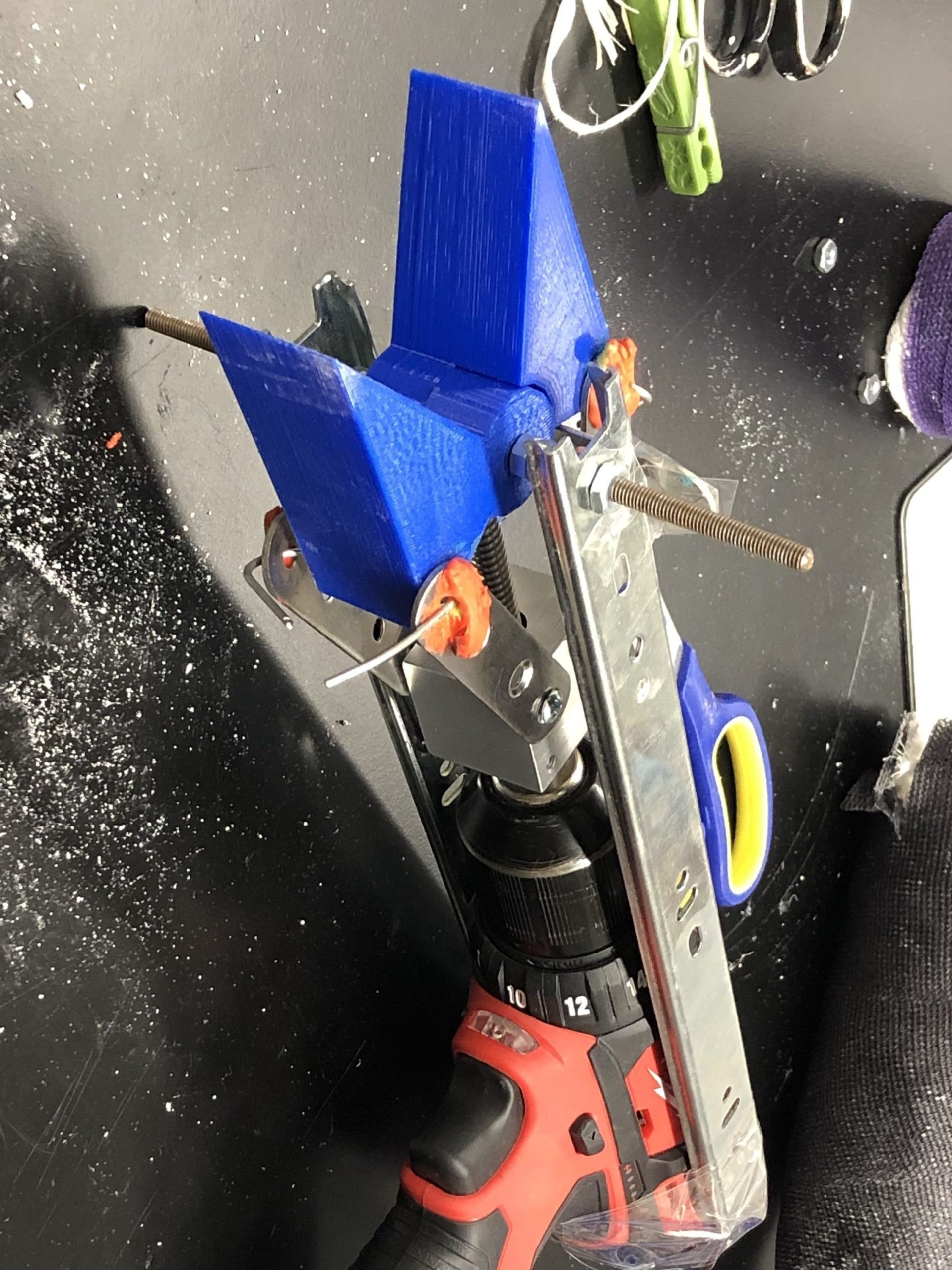
And settled on our final design.
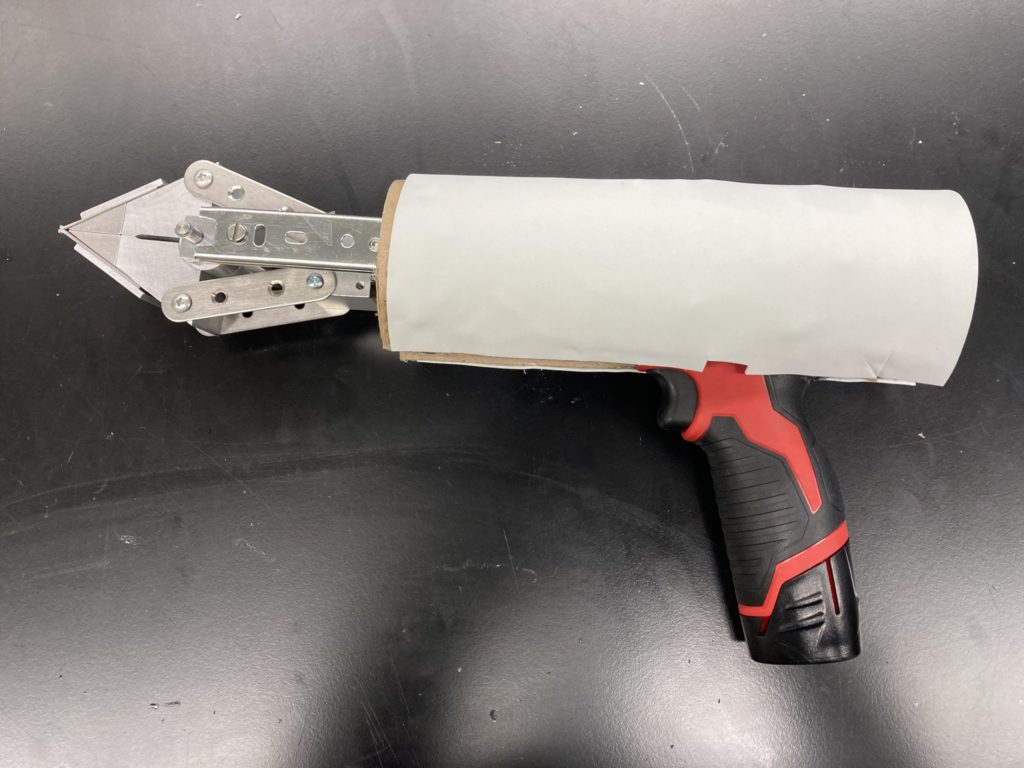
Once we had our device in hand, we began our testing.
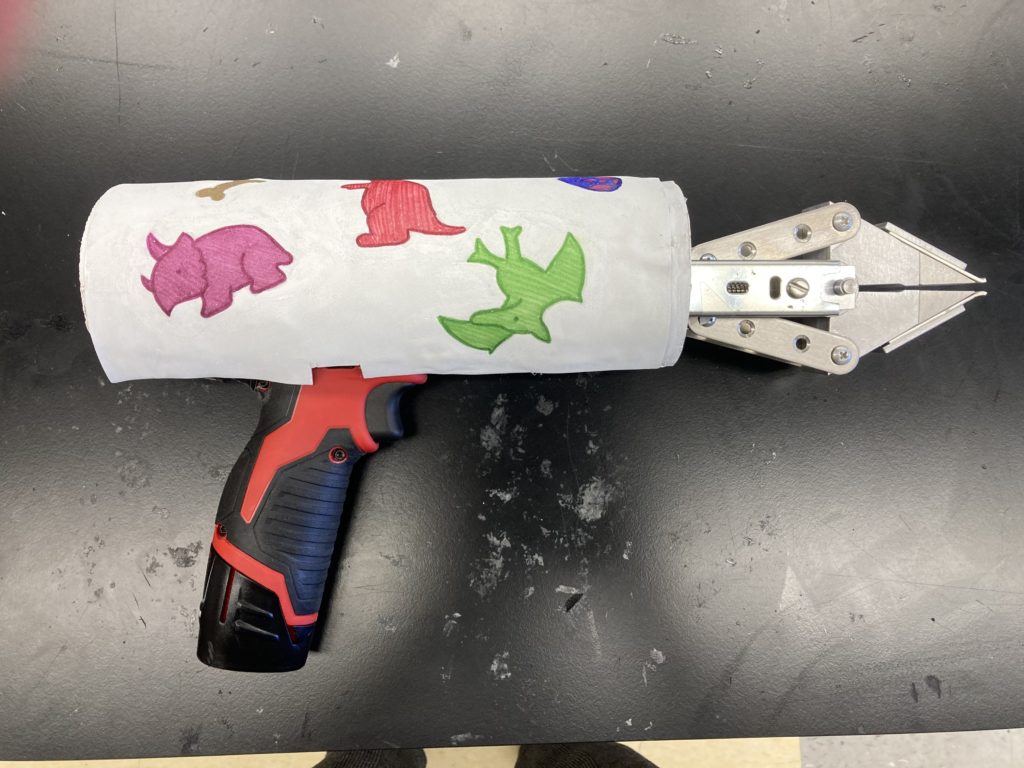
Finally, when we had finished evaluating how well the device worked, we brought some kids into the design lab to see how scary our device really was.
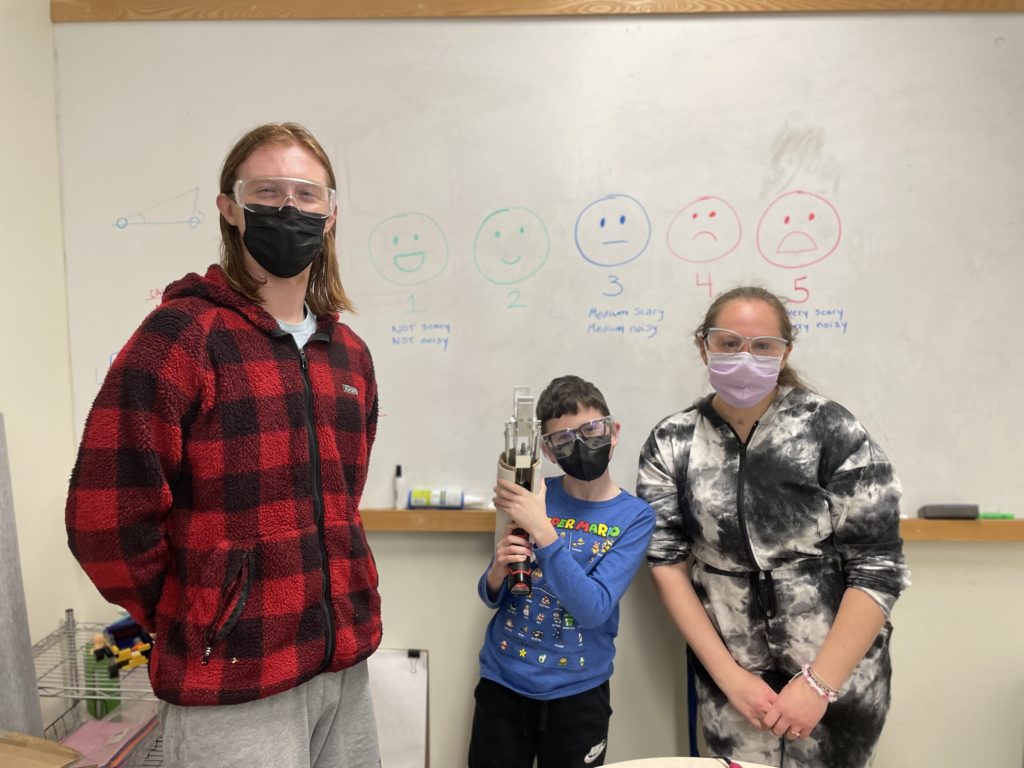
The Product
We developed a three step system for less scary cast removal.
Step 1: The Cast Application. The cast is applied as usual and before it fully dries and hardens, casts shears are used to cut a defect in the edge of the cast.
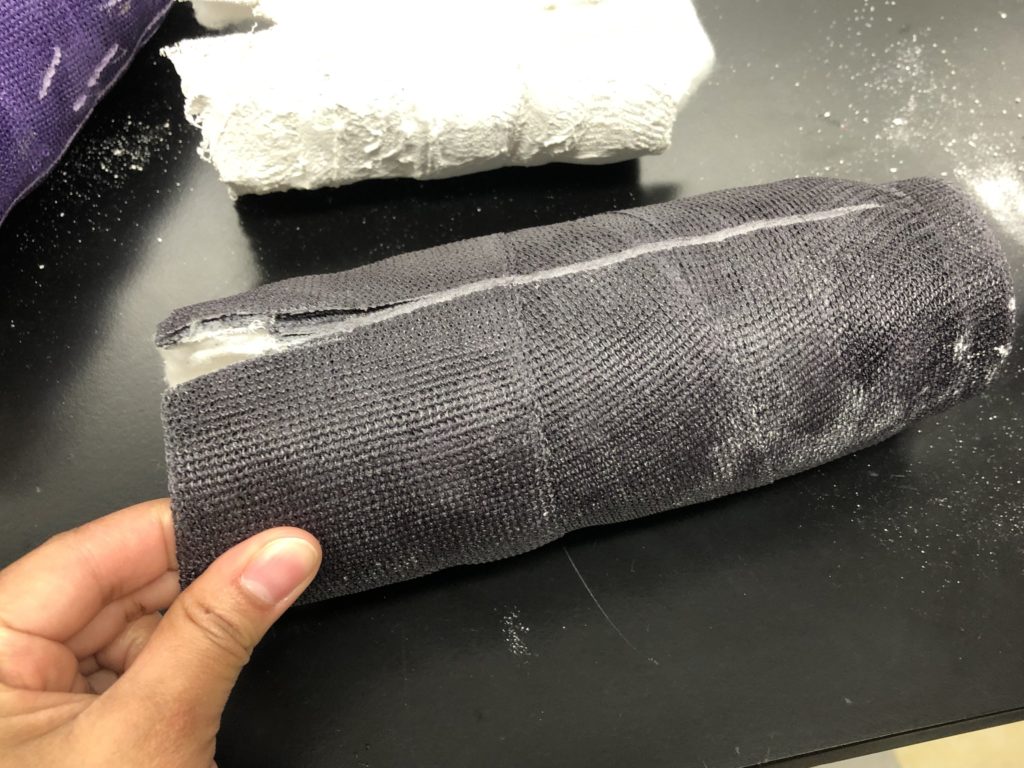
Step 2: The Weakening. When the cast is ready to be removed the physician will use an engraver to weaken the outer layer of the cast.
Step 3: The Splitting. The tips of the wedges will be inserted into the defect and the splitting device is turned on. The wedges will then begin to pry open the cast, the wedges will be moved along the crack as it propagates until it can be held open and the limb removed.
